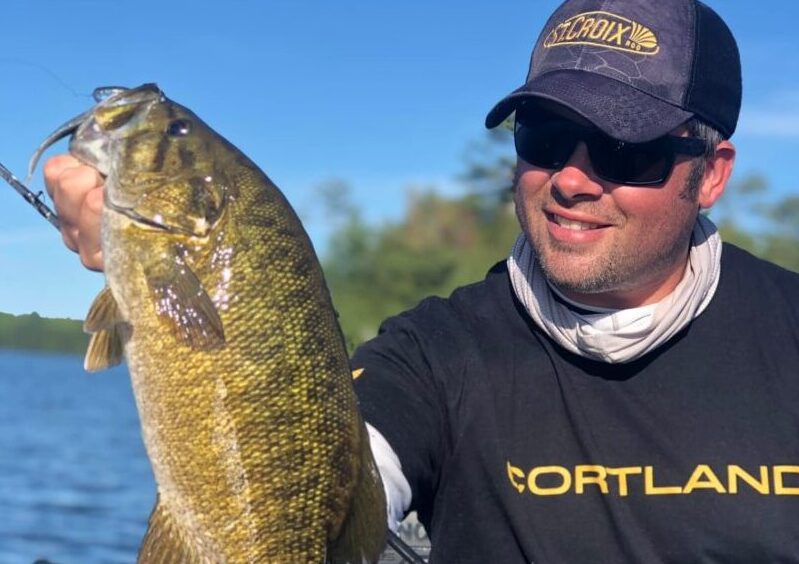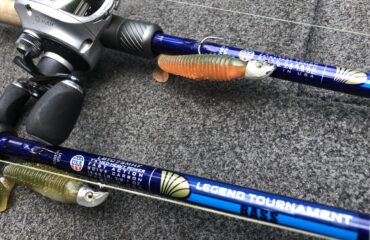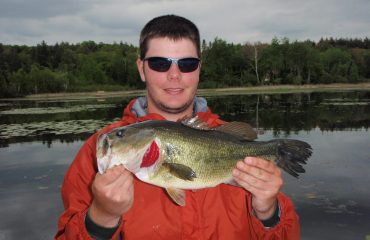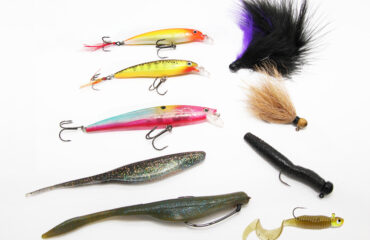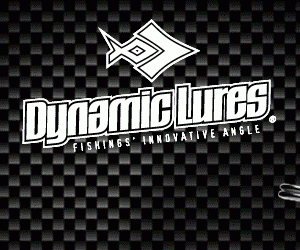Fishing for Northern Smallmouth
The inland fisheries of northern Wisconsin are the most diverse in the world. Each lake fishes differently, and each lake has been created differently through natural means or state-management.
Traditional smallmouth lakes offer deep and cool water. Some of the most incredible bodies of water I have ever launched my boat at possess a maze of transitions from shallow to deep water and underwater contour. Such examples are shelves, drop-offs, rock bars, sand bars, sunken islands, trenches, and fields of boulders. Any time you are faced with a lake offering all of this, it will be a smallie paradise. In my opinion, lakes offering too many specific spots to fish in one single day are the places worth spending your most time at.
Where to target Trophy Smallmouth
Although smallmouth bass are present in most lakes containing the aforementioned variables, big water and lakes larger than 1,000 surface acres are places that will usually contain the bigger fish along with substantial numbers of them too. As opposed to smaller lakes, 50 to 200 acres, that might not receive as much angling pressure, lake size and available habitat are the deterring factors that limit the number of big fish being present. One of the most common axioms in fishing is that big water grows an abundance of big fish. In the case of smallmouth bass, this goes undisputed. To catch big smallmouths, identify the true trophy bass lakes that have viable populations of smallmouths weighing 5 lbs. or more. Many inland northern waters that are managed for trophy fisheries, and have special management regulations, qualify in this respect.
Since I became a serious northwoods bass angler in the early 2000’s, I’ve caught and handled hundreds of trophy smallmouth bass. Each season alone from May through October, my guests and I catch and release upwards of 100 trophy caliber smallmouth bass surpassing lengths of 19 to 20 inches. With my largest smallmouth to date at 22 inches length, weighing in 7 lbs 8 oz.., I am convinced that my inland waters, rich in crayfish and pelagic baitfish, are capable of rearing the next Wisconsin state record all thanks to conservation and superb lake management.

In Vilas and Oneida Counties alone, we have the pleasure of having over 200 quality trophy bass lakes within 40 miles of Minocqua. This region is now becoming known as a world class bass fishing destination due to the increase in tournaments, and number of out of state license plates being observed at the boat landings. Because each lake fishes differently, and contains different population densities and size structures, we love having the option to fish multiple lakes per day, and cater our daily outings to personal needs as well as specific angling styles & techniques. Few places in the world outside of southern Ontario and Minnesota have this much bass fishing diversity within such a large concentration.
Set Ups for Smallmouth Fishing
I host a number of anglers per year, of wide fishing backgrounds and skill levels. Cortland Line has been synonymous with my fishing, and the successful guide program I run, for the past 12 years. Currently, Master braid is spooled up on every single St. Croix rod and Quantum PT reel in my boat; ranging in sizes from 5 lb. to 8 lb. for finesse applications, and 15 to 20 lb. for all-purpose casting and jigging. Each season, I tend to run thru 1,000+ yards of 15 lb. Master braid in moss green, just because of the strenuous angling we do, and to keep my several rod and reel outfits running fresh. The braid’s shelf life is long-lasting, as some personal reels of mine haven’t needed a fresh re-spool for 3 to 5 years (and I fish 120+ days per year).

For casting and horizontal presentations (cast & retrieve), my preference is darker lines, such as moss green and bronze . Smallmouths have good vision, and they tend to not spook from the contrast of darker colored lines. For jigging and rigging meanwhile, I prefer the high-visibility of yellow for immediate bite detection. Each line is always accompanied by a 3 to 5 foot leader attachment for abrasion-resistance, as well as masking the main line – so line and lure can both be invisible to fish. Since the introduction of Cortland’s Fluorocarbon leader material, we have been able to catch more fish and lose less baits to snags, bite-offs, and other underwater abrasives.
If you are a heavy user of braided line, using fluorocarbon leaders in a variety of sizes is an absolute MUST. For most smallmouth fishing, I carry spools in 8-10-12-16-20 lb. sizes. Cortland’s mini spools are ergonomical, don’t take up storage space, and are easy to manage and organize (with a quick connect spool design). For those of you who have struggled with tying line to leader attachments, I highly suggest trying and mastering the “RP Knot” (royal Polaris knot). It takes a quick 20 seconds, and is strong and smooth for line passage through all rod guides.
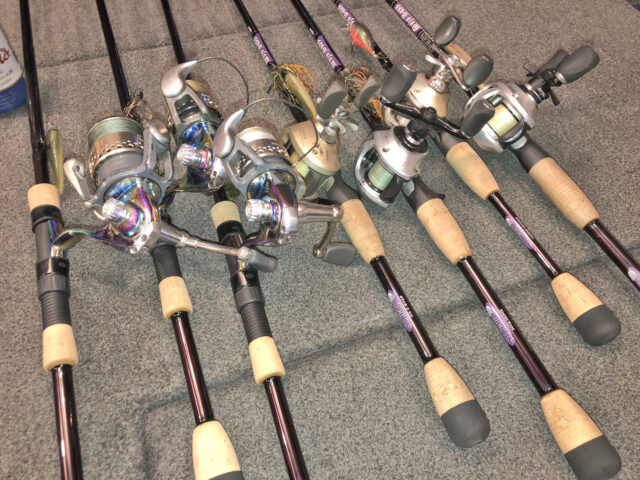
When it comes to the smallmouth fishing we do, strength and sensitivity are required. With majority of our fishing taking place off-shore and on deeper structure, using a strong line that offers quick strike detection, visibility, and power with hook-sets is a luxury. Hooking into 20-inch smallmouths are life-changing moments for every angler, and Cortland Master braid with its fluorocarbon leaders is responsible for majority of those hook-sets and successful catches aboard my boat.
When targeting trophy Smallmouth Bass in Northern Wisconsin it is very important to have the proper equipment to handle the power of these fish. Often times, many smallmouth anglers mistakenly fish with equipment that is too light to handle these fish. Light line and light rods are unable to deliver powerful enough hook sets from afar or when the fish are down deep. Using a proper medium heavy fast action spinning or casting rod paired with 15 to 20 lb. Master Braid for jigging and casting or 5 to 10 lb. for finesse fishing is the proper way to get the job done. This combo has put every 5 pound plus smallmouth caught by myself or clients in the boat.



